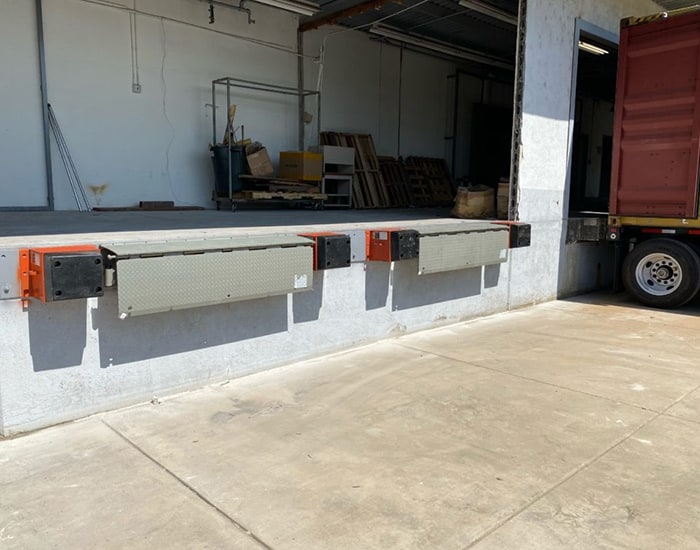The Relevance of Timely Dock Repairs for Beachfront Safety
The Relevance of Timely Dock Repairs for Beachfront Safety
Blog Article
Effective Dock Repair Techniques: Ensuring Architectural Honesty
Making certain the architectural honesty of anchors with efficient repair work methods is critical for the longevity and safety of marine centers. This entails a multi-faceted technique beginning with detailed assessments utilizing sophisticated innovations like sonar equipment and from another location ran automobiles (ROVs) to discover both visible and hid problems. Subsequently, selecting the right fixing materials, such as corrosion-resistant alloys and composite materials, is critical for longevity. Architectural support approaches, including the implementation of cross-bracing systems and load-distribution plates, play an essential duty in mitigating anxiety points. The significance of these strategies becomes evident when discovering advanced fixing techniques and preventative upkeep techniques.
Evaluating Dock Damages
Analyzing dock damage is an important initial step in making certain the structural stability and safety and security of any docking center. This preliminary analysis involves a comprehensive evaluation to recognize both concealed and visible damages. Secret facets to examine include the dock's foundation, pilings, outdoor decking, and hardware. Each element should be inspected for indicators of wear, rot, deterioration, or various other kinds of degradation that could jeopardize the structural integrity.
Architectural designers or qualified assessors generally perform these assessments using specialized tools and techniques. As an example, underwater assessments might use sonar equipment or from another location ran lorries (ROVs) to identify immersed damages. Above water, aesthetic assessments are matched by using dampness meters and various other analysis tools to uncover underlying issues not immediately noticeable to the naked eye.

Choosing Repair Service Products
Choosing the suitable fixing products is an essential action in the dock restoration procedure, one that straight affects the long life and efficiency of the repaired framework. Product option must be driven by aspects such as ecological conditions, load-bearing needs, and compatibility with existing dock components.
In enhancement to timber, composite products are progressively preferred due to their toughness and reduced maintenance demands. Composites, generally made from a mix of plastic and wood fibers, offer exceptional resistance to rot, insects, and UV damages. For metal anchors, choosing corrosion-resistant alloys such as galvanized steel or marine-grade light weight aluminum is vital to prevent corrosion and ensure architectural honesty in saline water conditions.
Epoxy materials and marine-grade sealants are crucial for repairing fractures and securing joints, providing a water resistant obstacle and boosting the dock's overall strength. By thoroughly picking top quality materials, dock repair services can attain long-lasting results, consequently safeguarding against future destruction and ensuring safe, trustworthy usage.
Architectural Support Techniques
Efficient structural support strategies are crucial in making sure the security and durability of dock repair services. One basic approach entails making use of steel or composite reinforcement bars (rebar) within concrete structures. Rebar provides extra tensile toughness, protecting against cracks and dispersing lots more evenly. This method is particularly effective for docks exposed to hefty tons or severe environmental conditions.
Another important technique is the application of fiber-reinforced polymers (FRP) These products use high strength-to-weight ratios and outstanding resistance to corrosion, making them excellent for enhancing concrete or wooden anchors. FRP can be applied in strips or sheets and bound with epoxy resins to boost structural integrity.
Supporting and anchoring systems also play a crucial duty in architectural reinforcement. Cross-bracing, utilizing metal or wood beam of lights, can counteract side forces, decreasing swaying and activity. Anchoring systems, such as helical piers or driven heaps, supply a steady foundation by moving loads to deeper, more secure soil layers.
Finally, the integration of load-distribution plates can aid distribute weight extra uniformly throughout the dock's surface, mitigating local stress factors. These strategies collectively make certain that docks stay risk-free and durable, efficient in holding up against the rigors of their functional environment.
Advanced Repair Service Methods

Another advanced technique involves underwater welding, which allows for repair work to be carried out without the need to dewater the location. This approach is especially beneficial for attending to structural issues in immersed dock parts, making sure very little disruption to procedures. Boosted welding strategies, paired with robotic systems, provide precision and dependability, thereby prolonging the life expectancy of the dock.
Additionally, cathodic security systems are executed to stop Discover More Here rust in metallic dock frameworks. By making use of sacrificial anodes or pleased present systems, these techniques efficiently mitigate the electrochemical procedures that result in material deterioration.
Last but not least, advanced monitoring modern technologies, such as structural health surveillance (SHM) systems, supply real-time data on the problem of dock frameworks. These systems enable aggressive upkeep and timely treatments, ultimately making certain the long-lasting structural honesty of the dock.
Upkeep and Avoidance
Maintenance and avoidance are fundamental concepts that underpin the durability and safety of dock frameworks. Normal assessments are paramount, permitting early detection of damage, potential weaknesses, and ecological impacts. An aggressive approach, including regular checks for rust, rot, and structural changes, reduces pricey fixings and extends the dock's functional life.
Safety nets need to include applying safety coverings to steel elements to guard against rust and utilizing cured timber to resist decay. Furthermore, ensuring proper drain and air flow can protect against water accumulation, which is a common reason for structural destruction. Incorporating high quality materials and sticking to maker standards throughout construction and repair work phases likewise play crucial functions in improving durability.

Educating employees in dock upkeep best this hyperlink practices ensures constant application of preventative procedures. Leveraging technological advances, such as drones for evaluations and sensors for real-time tracking, can even more boost upkeep initiatives. By focusing on maintenance and prevention, dock proprietors can make certain structural integrity, functional security, and cost-effective monitoring over the dock's life expectancy.
Conclusion
In verdict, maintaining the structural stability of marine centers demands comprehensive dock repair service strategies. Advanced repair techniques, coupled with routine maintenance methods, make sure the dock continues to be secure and operational under diverse environmental conditions.
Making sure the architectural honesty of anchors via reliable fixing techniques is paramount for the longevity and safety of marine facilities.Selecting the suitable repair work materials is a critical step in the dock remediation process, one that directly influences the longevity and efficiency of the fixed structure.Reliable architectural support techniques are critical in guaranteeing the stability and longevity of dock repairs. By focusing on upkeep and prevention, dock proprietors can guarantee structural integrity, functional security, and affordable monitoring over the dock's lifespan.
In final thought, preserving the architectural integrity of marine facilities demands extensive dock repair work techniques.
Report this page